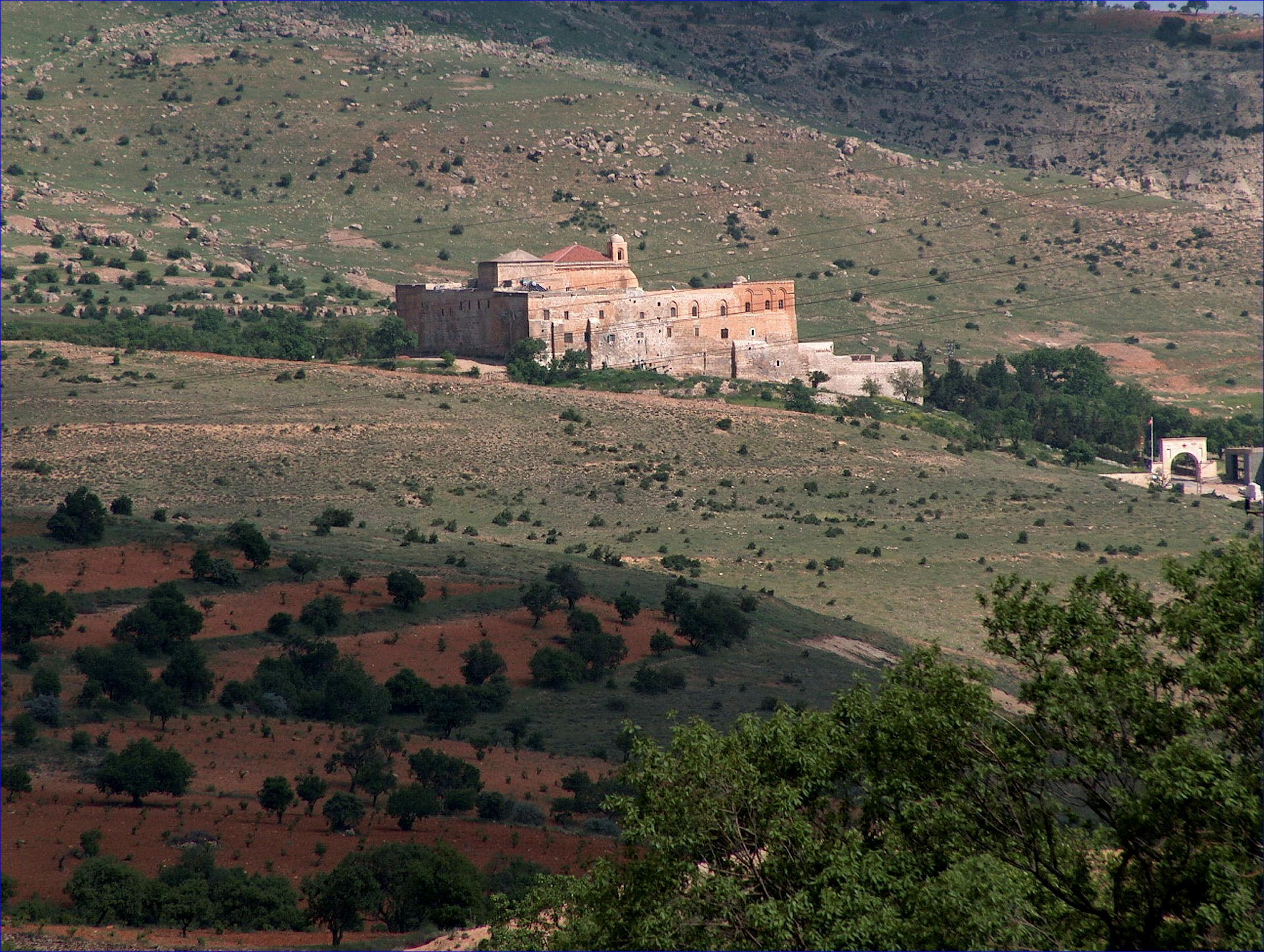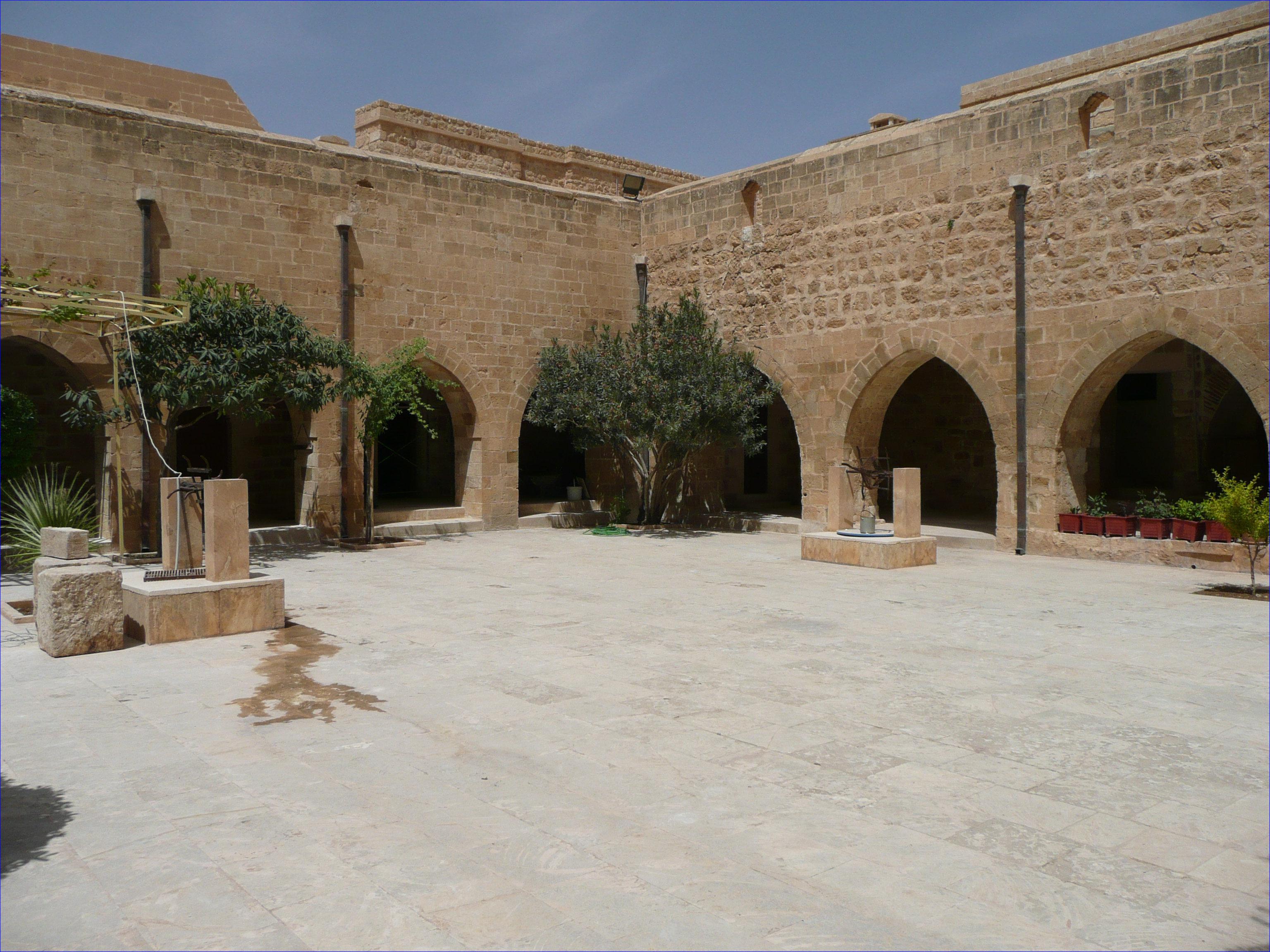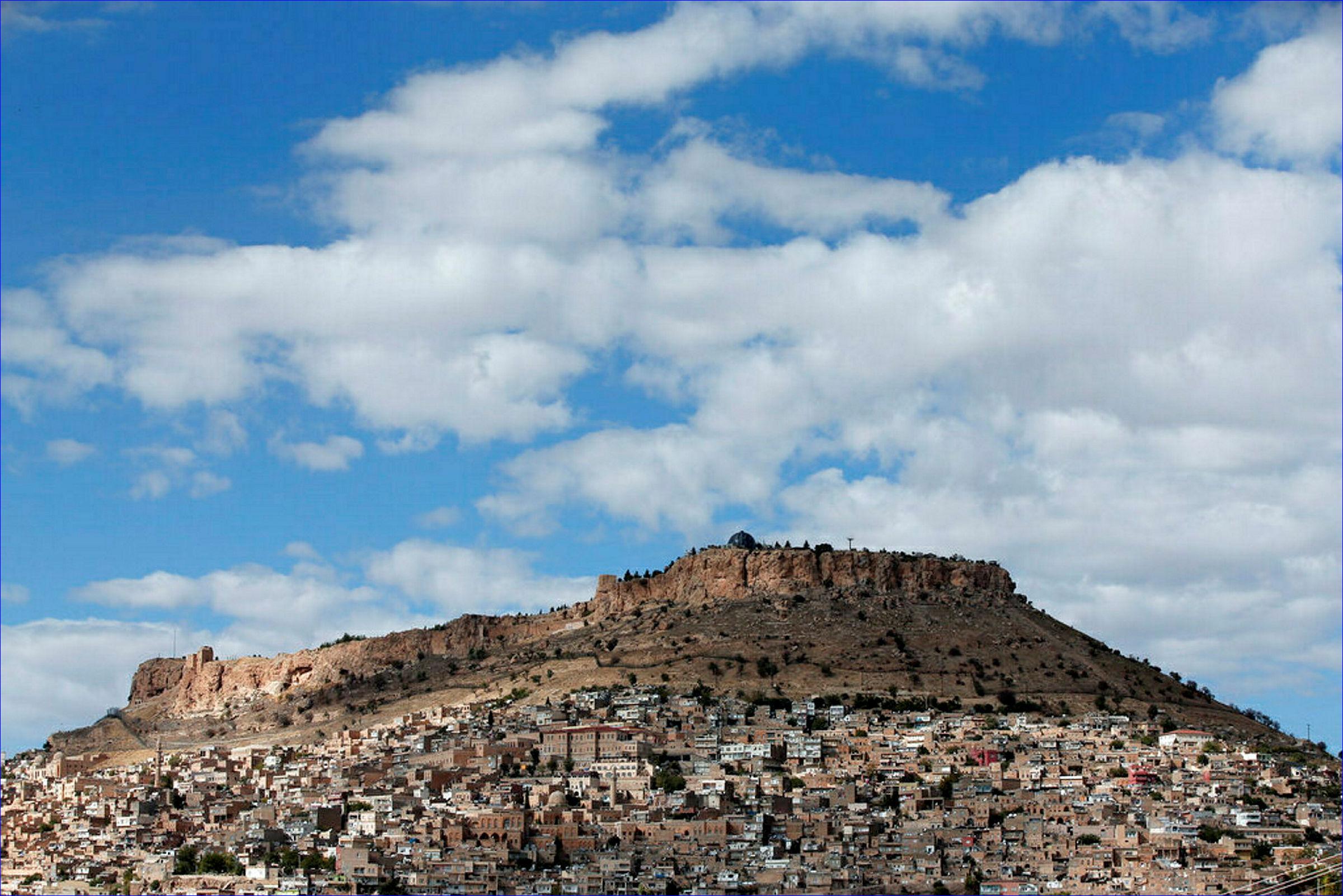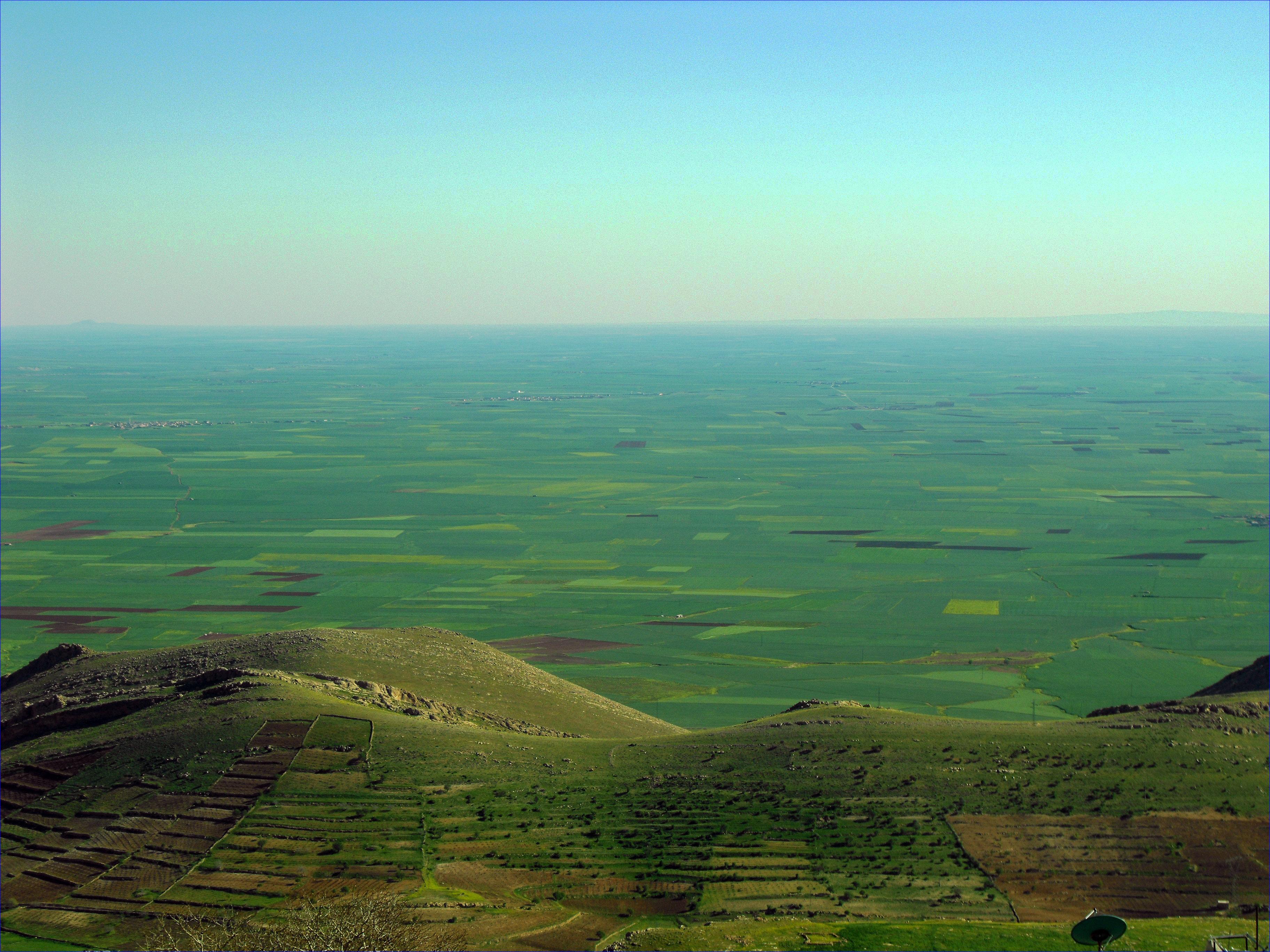


A few kilometers southeast of the city of Mardin is Deyrul Zafaran Monastery, the first incarnation of which was built on the mountain slope about 1,600 years ago. Deyr means monastery and zafaran means saffron in Arabic, so yes its name is technically the Saffron Monastery Monastery, and it was built smack on top of a temple to Shams, Shamash, Shamsum or call him what you will: the sun god.
Deyrul Zafaran was built using cream-colored stone blocks that, in some parts, glow as yellow-orange as the spice. Its oldest sections date to the late fifth century -- early days for Christianity.
On a visit by Israeli journalists to southeastern Turkey courtesy of the Turkish Ministry of Culture, we are told the monastery's present name stems from the hues of saffron, which is grown locally. Alternatively, some claim its name stems from crocus stigmas being actually mixed into the mortar during construction.
The only sure thing is that at the time of our visit, the monastery gift shop didn't have any of the precious spice for sale. Jewelry, clothing, locally produced wine, ice cream and much more, but the only saffron available was in the tea.
Another fact is that the Saffron Monastery arose on a site already held sacred, just not to the same god. Deep inside, almost buried in debris and dirt, lies what is interpreted as a temple to the sun god, dating to about the fifth century B.C.E., according to tour guide Alim Kocabiyik. Some think it may be centuries older.
Related: Brief History of Assyrians
The temple's next incarnation wasn't as divinely inspired. Centuries after the house of worship to the sun god was erected, the Romans arrived and converted the building into a citadel. But as their empire imploded in the fifth century, the monastery began to rise. The year was, reportedly, 493.

 Nevit Dilmen)
Nevit Dilmen)
Sun in your eyes
The whole area has been occupied since forever. Early humans surely passed through; more modern ones too. Göbekli Tepe, Karahan Tepe, Nevali Cori and Mardin -- all feature remnants from an extraordinary pre-agricultural civilization of hunter-gatherers who came together and created monumental gathering places that, 12,000 to 11,000 years after the event, still impress with their power.
The old city of Mardin itself was built in stone atop the mountain and cascading down its slope many generations after the Göbekli culture vanished.
Related: Assyrians: Frequently Asked Questions
From the Old City of Mardin, one has a magnificent view of the Mesopotamian plain. On a clear day you can see not only Syria but as far as the Arabian Gulf, Kocabiyik says. We were not there on a clear day.
The oldest part of the city, archaeologists deduce, arose down the slope of the last mountain in the southeast Turkish highland as much as 6,500 years ago, Kocabiyik says.

 Lefteris Pitarakis/AP)
Lefteris Pitarakis/AP)
What its name was then, if cities had names at all, we do not know; its first known name from the historic period was Marida. The Syriacs call it Marde, and it would be the Arabs and Turks who gave it the present name. The people who lived on the plain at that time were known as the Subartu.
The name of the monastery, like that of Mardin, has changed from time to time. Originally called Mor Shleymon (Suleiman), according to Syriac sources, it has also been known for centuries as Dayro d-Mor Hananyo -- after a beloved church patriarch, Saint Ananias of Damascus, Kocabiyik explains. According to the New Testament, Ananias was sent by Jesus to heal the eyes of Saul of Tarsus, who would subsequently become known as Paul the Apostle.
Related: The Case of the St. Gabriel Assyrian Monastery in Midyat, Turkey
Much of the monastery is fairly modern construction, which in this part of the world can date back centuries. But some parts and frescos have been preserved from its earliest incarnation as a small church on a hill, Kocabiyik says.
Over the years it expanded to cover the slope of the adjacent hill too, and until the 1930s it was the center for the Syriac church patriarchate, which then moved to Syria. Inside the church are, among other wonders, stone vaults containing the seated, garbed bodies of former patriarchs of the church.

 MehmetO/Shutterstock.com)
MehmetO/Shutterstock.com)
Why was the sun temple built there, and on top of it this early church? Possibly because of spiritual frissons. Possibly because Mardin was on the Silk Road and therefore had, in its ancient territory, plenty of khans and caravansaries, and places where itinerants and locals could worship.
Mark you, not all the faithful necessarily resided within the monastery over the ages. The mountainside consists of limestone and is riddled with holes and caves, some artificial, which served as domiciles for hermits. Today, some of the caves in the hillside above the town center house surprisingly spacious restaurants and cafés.
Bury the shame
To reach the sun god temple, one descends into the bowels of the monastery building into what looks at first glance to be a man-made cave, with a low stone brick ceiling. This is the oldest part of the structure, Kocabiyik says.
Other people might have adored both the sun and the moon. Ancient Israel featured temples to both of these popular deities, and to this day some modern Israeli city names reflect these ancient beliefs: Beit Shemesh (sun), Beit Yerakh, even Jericho (moon), to name a few.
In this temple beneath the church, the moon was not a factor. The faithful to Sol were known as Shamsi or Shamasi, says Kocabiyik -- devoted to the sun and to it alone.
The cave-like room seems disturbingly low, but about 3 meters (9.8 feet) of soil and debris built up on the floor over time, he adds.
Happenstance? Maybe. But it's plausible that the builders of the monastery tried to hide the shame of the building's pagan roots by burying it, and it "feels" like just a cellar.
In fact, this habit may go back millennia. It seems that monumental gathering places erected some 12,000 to 10,500 years ago on the Harran plain were deliberately buried in soil and rubble after their use. Archaeologists can speculate why, but we don't actually know.
But this chamber, that had been a place to adore the sun god, still has a window to the outside facing eastward, where the sun rises. The Shamsi would begin their daily ritual when the rising deity's rays reached that opening, Kocabiyik explains.
Note that an Assyrian relief recently discovered beneath a modern Turkish house in southeastern Turkey features a procession of gods led by the storm god Hadad-Baal, and including the deities of the moon and sun. It may date to about 900 to 600 B.C.E.

Come the modern era, the monastery takes pride in having purchased the first printing press in the region, brought from England in the second half of the 19th century by the patriarch. It was used until 1969, printing books in Syriac, Arabic, Ottoman and Turkish. It was also, sources observe, the official printing press of the Turkish Republic in the region for the prosaic reason that it was the only one.

or register to post a comment.